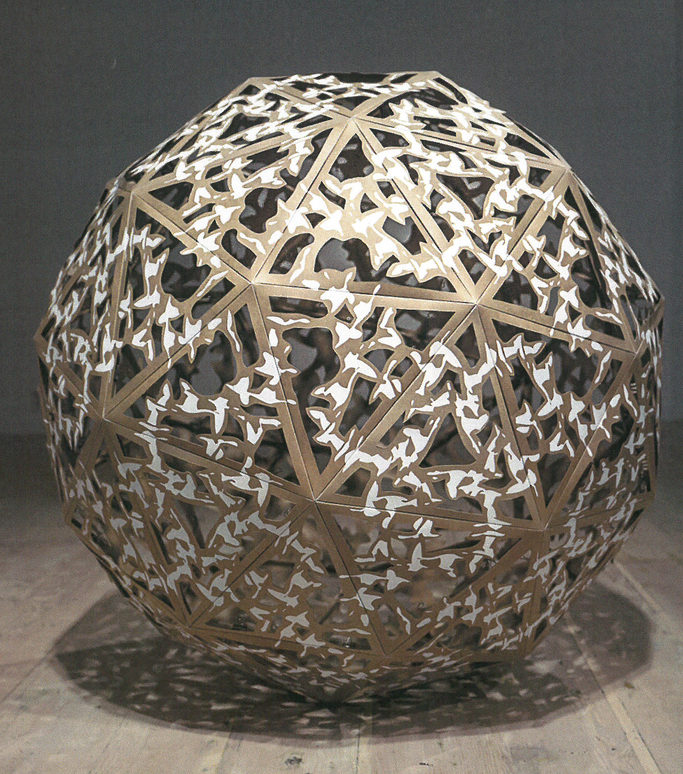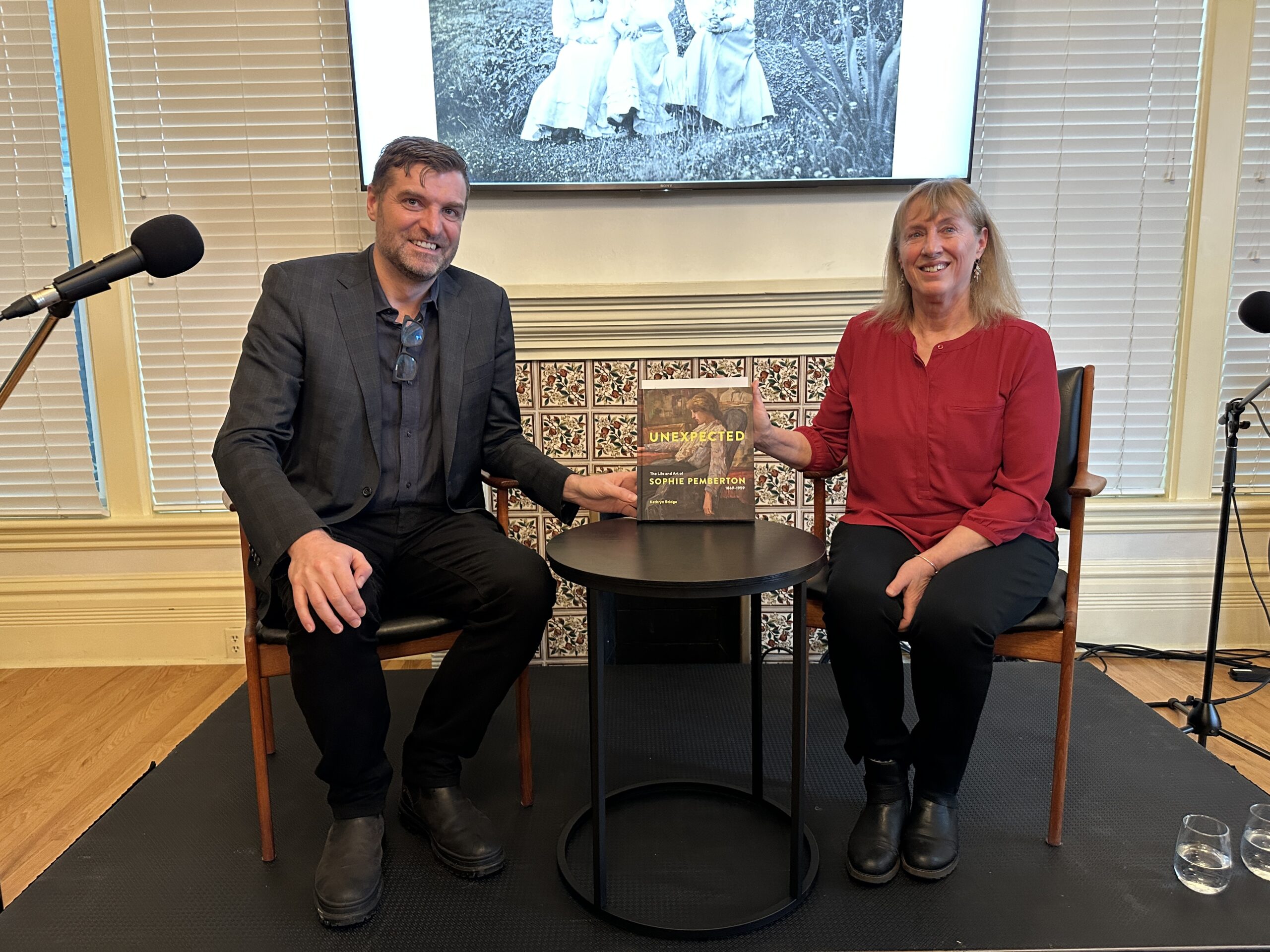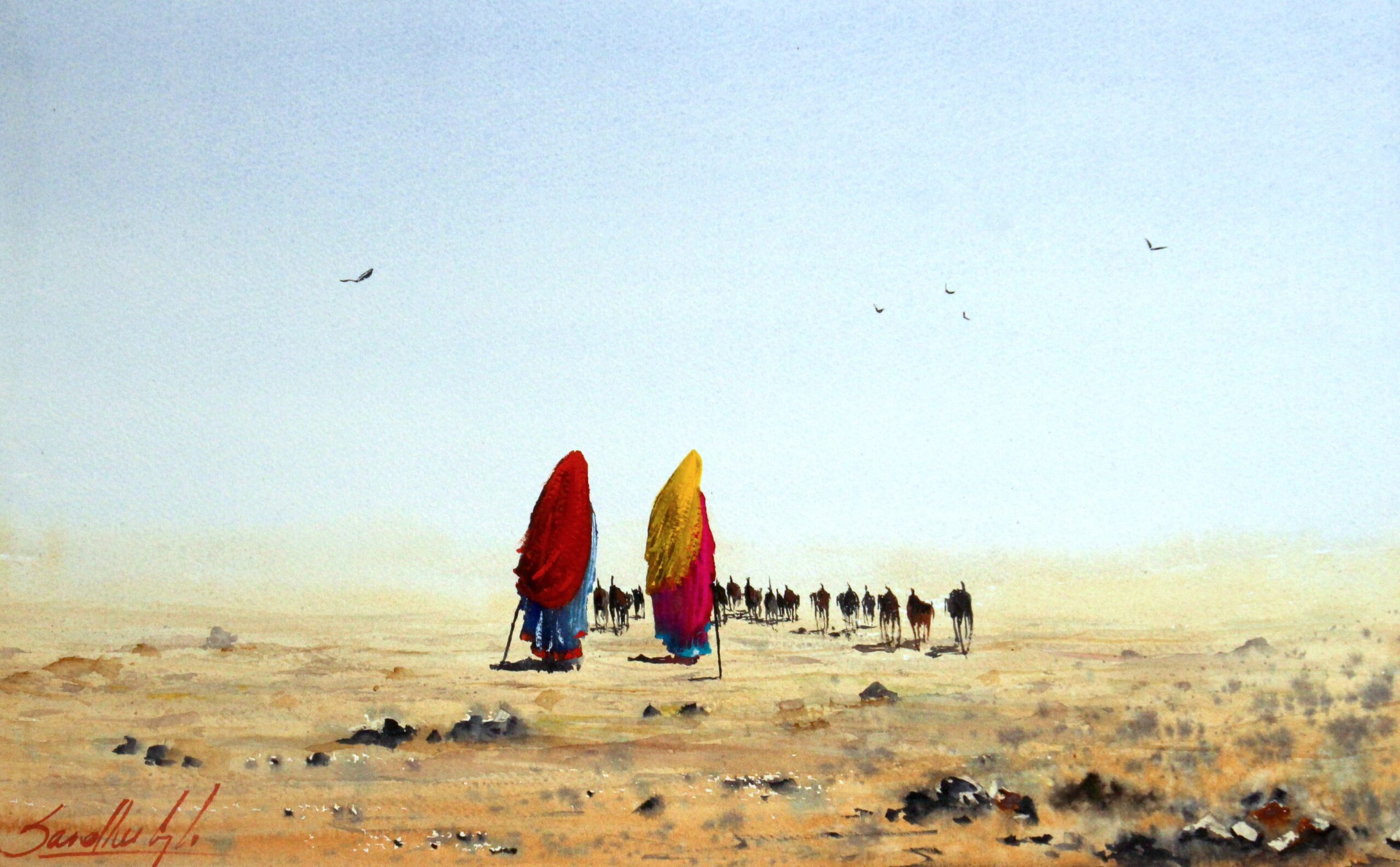By Audrey Wang, AGGV Volunteer
The exhibition Close To Home may be regarded as an extension of another exhibition at the AGGV, Moving Forward By Looking Back. Both shows examine the Gallery’s collecting policy that was put into place by Colin Graham, the institution’s first director, who played a vital role in establishing the AGGV. While the exhibition Moving Forward By Looking Back takes a broad view on the first thirty years of acquisitions for the Gallery’s permanent collections, Close To Home focuses on works of art by local artists from Victoria and the region. The exhibition, in turn, intersects with the many fascinating stories of the cultural life and legacies of the capital city and its surrounding environs.
Featured above: Charles Campbell | Transporter #3 (Flock) | 2011 | Metal and paper | 101.6 cm diameter | Purchased with the support of the Canada Council for the Arts Acquisition Grants program and the George and Lola Kidd BC Art Acquisitions Fund, Collection of the Art Gallery of Greater Victoria, 2014.014.002
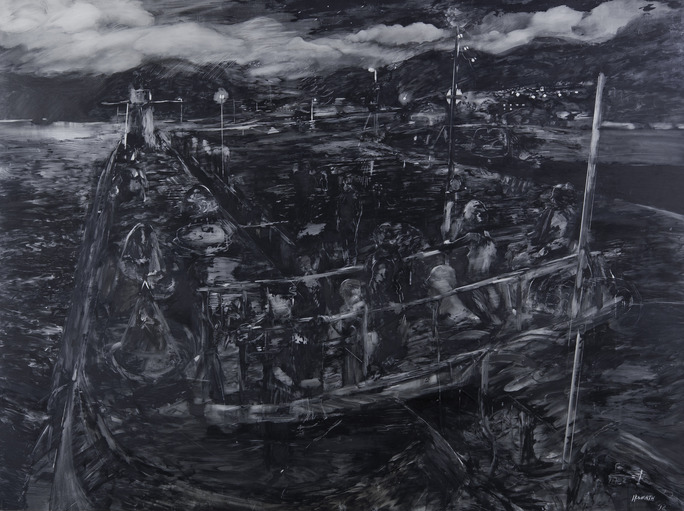
In 1944, the Honourable Mark Kearley, an Englishman who had moved to Metchosin from Europe not long before, gathered together a group of like-minded people to found a Victoria branch of the Federation of Canadian Artists (FCA). Despite the fact that there were no civic galleries in the city during that time, forty artists would join the FCA. Once this group of driven and creative individuals came together, they became the practical and philosophical inspiration for all kinds of local artistic activity that would culminate in the founding the AGGV in 1951.
Colin Graham is well-remembered for his fruitful relationships with the collectors that helped in building the collection from scratch. He also maintained close relationships with artists, recognizing their significance to all aspects of the AGGV’s existence. Therein lays the motivation behind the collecting policy he set in place, one that focuses on acquiring artworks by leading artists of the city and region. Close to Home features celebrated modern and contemporary local artists, but also artists who deserve to be better known, in consideration of what makes an artist a leading one.
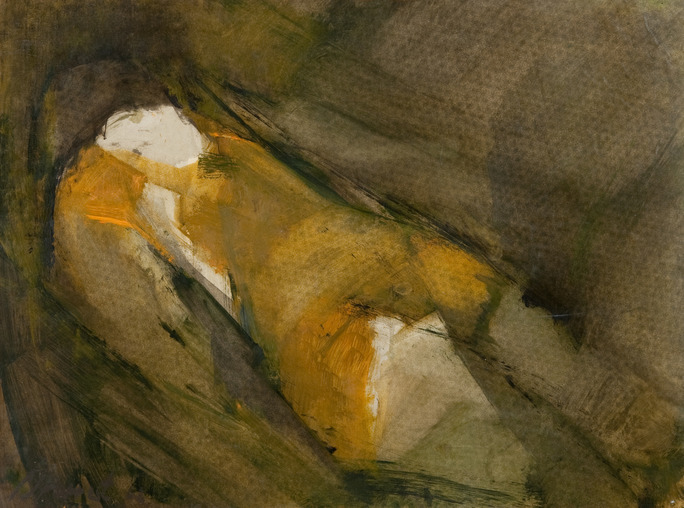
Nita Forrest (1926-1996) played an important role in her contributions to the vibrancy of the art scene in Victoria in the 1950s and 60s. She was a member of the Victoria Limners Society, a collective of painters, potters, sculptors and other visual artists. Figure in the Dunes was given to the Gallery by the artist. The painting is typical of Forrest’s established style of painting and drawing human figures, in which the figure comes in and out of focus on the flat surface of the canvas, ephemeral yet intensely human.
Marianne Nicolson is an artist of Scottish and Dzawada’enuxw First Nations descent. Memorial Work for Hayusdisalas (Part 4) is an important inclusion in the exhibition. She says in her Artist Statement: My work stems from a strong belief in the value of Indigenous philosophies and ways of being on the land. It is also driven by a mandate for social justice and the well being of all peoples. Art, writing, performance, and academics are all platforms for the expression of these ideas. Fundamentally, it is about communication, resolution and inspiration. My inquiry questions the social and political contexts which frame the existence of my own Nation, the Dzawada‘enuxw of the Kwakwaka‘wakw peoples. Our history, both magnificent and tragic, is deeply rooted in the lands we inhabit, the Kingcome Watershed and the Broughton Archipelago. Since contact, this relationship has been threatened by outside forces and we are under duress to hold onto our traditional ways of being. My practice is an attempt to manifest these philosophies into contemporary spaces and conversations. My hope is that through this process of expression that the ideas remain alive and that others can experience their value. I do this because I believe that Indigenous worldviews can benefit all peoples, in particular, our notions of community connection to one another and to the land.

Another fascinating inclusion in the exhibition is the large ball of metal and paper by Charles Campbell. Transporter #3 (Flock) (pictured above) is part of a group of works by the artist. He describes his work: The Transporter Project inhabits the interstices of a number of artistic, and political concerns. Begun initially as a visual investigation of the phenomenon of forced migration, the work also combines the desire to find a more material form for the motifs inhabiting my paintings with an emerging interest in the play between various aspirational futures and the present. The result is a project that converts three-dimensional forms into complex image surfaces, playing between heavily loaded political narratives and utopian ideals, object and image, public and private spaces.
Close to Home: Local and Regional Artists in the AGGV Collection | April 22 – September 4 2017 | Curated by Michelle Jacques | Centennial & Ker Galleries
